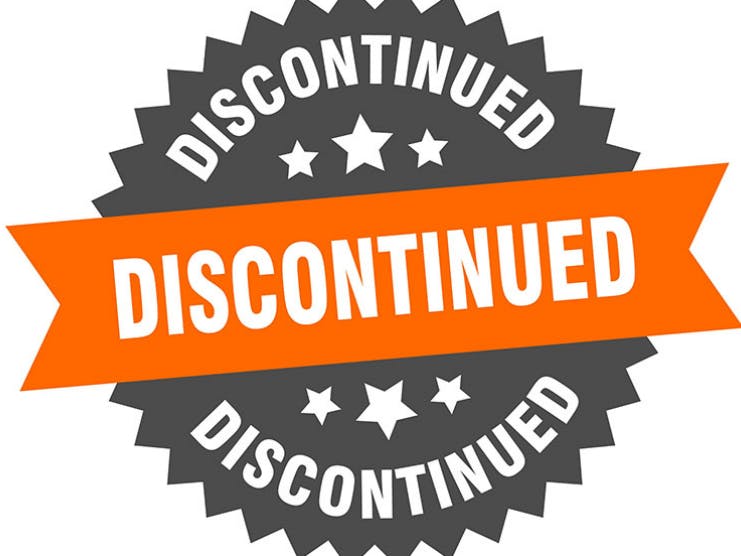
Medigap Plan F and Medigap Plan C are no longer available to people who qualified for Medicare on or after January 1, 2020.
If you’ve ever shopped for a Medicare Supplement plan, you’ve probably encountered Plan F. Plan F is, for now, the most popular Medicare Supplement plan on the market, and it’s also the most comprehensive. However, this plan is being discontinued. We’ll go over why this is, what it means for Medicare Supplement plan shopping in general, and what your other options are if you want comprehensive coverage.
What is Medicare Supplement Insurance?
If you’re new to supplement plans, then some additional explanation is in order. Medicare Supplement Plans, also known as Medigap plans, are insurance plans offered by private health insurance companies. These plans don’t directly pay for medical care. Rather, they pay for out-of-pocket costs associated with Original Medicare insurance.
This means that whereas most health insurance plans cover actual medical services, Medicare Supplement plans cover things like your Medicare Part B deductible, Part B coinsurance and copays, and so on. There are a variety of fee categories that Medigap plans will cover, and several plans to choose from. The variety of plans ensures that you’re able to find a plan that covers exactly what you need, whether you want comprehensive coverage or just a few categories.
Medigap plans are referred to by letter names, so you’ll often hear about “Plan F” “Plan C” and so on. It’s important to note that these don’t correspond to any “Part” of Medicare. Plan A, Plan B, and Plan C have nothing to do with Part A, Part B, or Part C of Medicare. Medigap isn’t a part of Medicare at all, but simply a supplemental type of insurance.
Medigap plans are offered by private insurance companies, so the cost will vary depending on your location and which plan you buy. However, coverage is standardized, so every plan will cover the exact same things no matter which state you are in.
This page from medicare.gov contains a detailed chart that allows you to compare how much coverage each plan offers.
Limits on Medigap coverage
Medigap plans only cover out-of-pocket costs associated with Original Medicare (Medicare Part A and Part B). If you have a Medicare Advantage Plan or a Part D prescription drug plan, none of your copays or coinsurance costs for these plans will be covered by your Medigap plan.
What is Medicare Supplement Plan F?
Plan F is simply one of the Medigap policies that is available and is currently the most popular plan. There is nothing unique about Plan F, but it is notably the most comprehensive plan available. Plan F covers the following:
- Part A coinsurance
- Part B coinsurance or copayment
- Blood (first 3 pints)
- Part A hospice care coinsurance or copayment
- Skilled nursing facility care coinsurance
- Part A deductible
- Part B deductible
- Part B excess charges
- 80% of Foreign Travel Expenses
Plan F is also offered in a high-deductible version. High-deductible Plan F is exactly what it sounds like: the deductible is higher, but premiums are lower. Otherwise, coverage is exactly the same. Plan G is the only other plan that offers a high-deductible version.
Why is Plan F so popular?
Plan F is popular for a few reasons. Notably, Plan F is the most comprehensive plan. Because many people simply want as much coverage as possible, Plan F is an easy choice. Knowing that you have the maximum coverage available lets you rest assured that there’s nothing more you could do to get any better coverage than what you already have.
Plan F’s popularity also helps lower prices. The more insurance companies offer Plan F, the cheaper it gets, since they have to compete. Although Plan F is usually the most expensive plan offered due to coverage, the ratio of coverage to cost tends to work out well because it’s offered by so many insurance companies.
So, why is Plan F going away?
Medicare Supplement Plan F is being phased out as a result of “The Medicare Access and CHIP Reauthorization Act of 2015”, also known as MACRA. As a result of MACRA, anybody who becomes eligible for Medicare in 2020 will not be able to purchase Plan F.
This means that if you turn 65 on January 1st, 2020, or after, you will not be able to purchase Plan F under any circumstances. However, if you turned 65 at any time before this date, you will still be able to buy Plan F. This is the case even if you didn’t have Plan F before, and even if you didn’t have any Medicare Supplement plan before. If you have had Medicare coverage for 20 years and never had a Medigap plan, you’ll still be able to buy Plan F if you were eligible before January 1st, 2020.
If you are a new enrollee in Medicare, but have been eligible since before 2020, you can still buy Plan F.
In this way, Plan F is going to be slowly phased out, rather than disappearing immediately.
What are my options now that Plan F is off the table?
If you are one of the people who won’t be able to buy Plan F, you still have options for comprehensive coverage. There are many Medigap plans out there, so you’ll most likely be able to find a plan that suits your needs, even though Plan F is unavailable.
Plan G: Plan F’s successor?
Plan G is the plan that will most likely succeed Plan F as the most popular on the market. Plan G offers all the same coverage as Plan F but doesn’t cover the Part B deductible. In 2023, the Part B deductible comes to $226, which is typically lower than the premium difference between Plan F and Plan G.
Compare Medigap plans now
The premium costs will vary, but as Plan G gets more popular, you can expect it to also get a bit cheaper. If you want comprehensive coverage, Plan G is definitely the option to look at.
Plan D and Plan N: Less coverage, but still worthwhile
Plan D and Plan N are two other plans that we expect to rise in popularity. These plans actually offer the exact same coverage, but Plan N has a unique payment structure. This plan has a copayment that you must pay when you go to the doctor, so the premiums will tend to be cheaper.
These plans cover everything that Plan F covers except for the Part B deductible and excess charges. Excess charges are fees that you must pay when your doctor doesn’t accept Medicare assignment. In this case, there will be a difference between the amount that your healthcare provider charges, and the Medicare-approved amount, and this will be your excess charge.
What to look for in Medigap plans, in general
Although these plans are all good to look at if you wanted to buy Medigap Plan F, there are a few general things to remember when you shop around. Plans will vary in cost depending on who you buy them from and where you are in the country, so it’s important to compare the cost in order to ensure that you get the best deal possible.
Your unique needs should also factor into your decision. For example, if you expect to pay a lot in excess charges, then it makes more sense to get Plan G versus Plan D, even if Plan D is cheaper. Make sure that you understand what you usually spend on healthcare costs in various categories before you make your choice, so you can make sure that your plan fits your needs. If you’re working with an insurance agent, they can likely help you with this process.
Final thoughts on Plan F
Although Plan F is popular, the fact that it’s being phased out isn’t a huge loss. There are plenty of other plans to choose from, and Plan G offers basically the same coverage as Plan F. As always, the most important thing is to examine your unique needs and situation and come to a conclusion about which coverage you want, and then to compare your options. Although the plan options to choose from are now fewer than they were before, you’ll surely find something that works for you.
Comparing Medigap plans is easy with our Find a Plan tool. Just enter your zip code to start reviewing Medigap plans in your area.
Additional resources
- ClearMatch Medicare: Find a Medicare Plan
- Centers for Medicare & Medicaid Services: What's MACRA?



